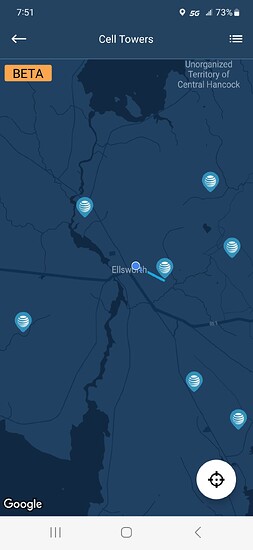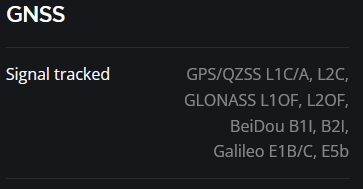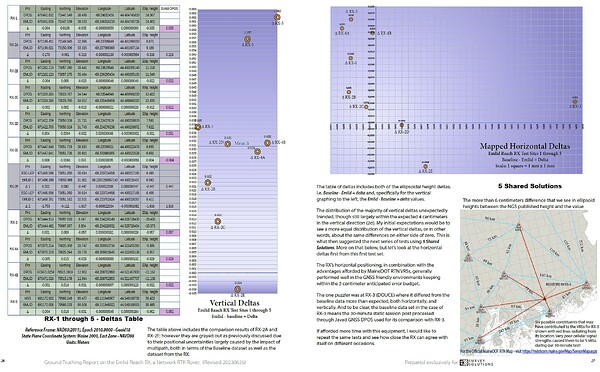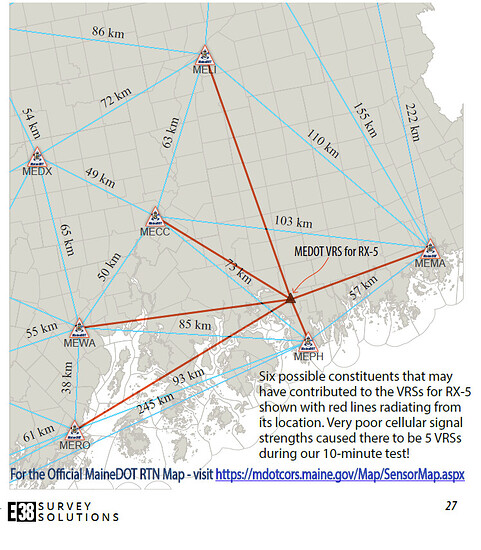Better late getting back to this than never, I guess.
So the answer to your questions is “yeah, kind of like that”. I haven’t tested this since I last wrote on here, but on the different occasions I experienced this, I used the same phone, or sometimes that phone and a tablet, but I purposely took shots with both mobile devices hooked to both GPS units, using each device’s 4G connection, my home wifi (I was testing right off my back patio), and even each other’s hotspots. To be honest, there were shots mixed in where the accuracy would go up to close to a meter, and those were cases of the units disconnecting from the phone or tablet, but I was mindful of those types of issues. Any latency or speed problems would have affected both GPS units equally, in a somewhat controlled testing environment.
From my limited comparison of the RX side-by side with the RS2 or RS2+, over maybe 5 to 7 sessions of taking about 10 shots with each unit, usually using the same phone and internet for both GPS units, but occasionally switching if the I suspected network problems, there was only one time I can recall where the RX got below 1 inch. I noted it was a clear, sunny day. Many of the other times, it was after dark and there was enough fog in the air that I could hear the electricity ionizing the water droplets along the powerlines, and every shot would be around 11 inches. The RS2+ always got down to below an inch, usually about 1.3cm.
I’ve tested it another time using an RS2+ as a base and the RX as a rover, both of them being in the same yard. Those shots all came in around 1cm, and I shot about 250 of them really rapidly.
***any reference to precision or accuracy is based on the GPS meta data.
Could it be that the RX is only single band, like the RS+, where it’s technically capable of centimeter RTK, especially when working with a short baseline, but it doesn’t perform well in less than ideal environments?








